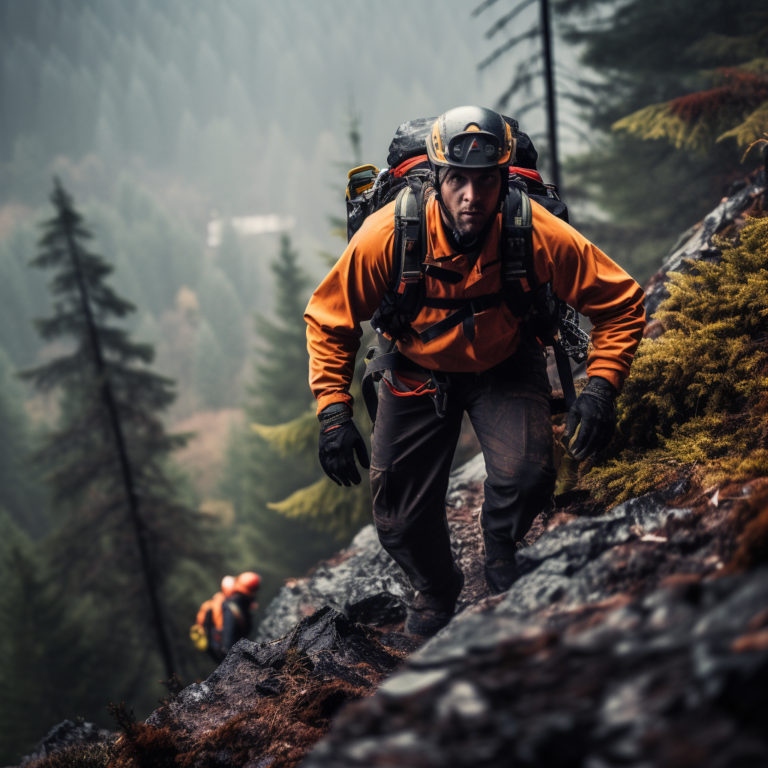In the realm of firefighting, where the unexpected is the only constant, the fitness of those on the frontlines becomes a paramount consideration. Urban landscapes, rugged terrains, and steep inclines demand a unique set of physical and mental skills from firefighters. In this comprehensive fitness guide, we explore specialized workout regimens designed to meet the challenges posed by distinct firefighting scenarios. From navigating dense urban environments to scaling steep heights, our focus is on equipping firefighters with the strength, endurance, and resilience needed to face the extraordinary.
Section 1: Urban Firefighting – Stamina in the City Jungle
Urban Challenges: Urban firefighting presents a dynamic set of challenges – from navigating multi-story structures to swift responses in confined spaces. Here, cardiovascular endurance and agility are the linchpins of success.
Workout Regimen:
- High-Intensity Interval Training (HIIT) for Rapid Bursts:
- Drills: Incorporate sprints, burpees, and explosive movements.
- Purpose: Simulates the abrupt bursts of energy needed during urban firefighting emergencies. HIIT enhances cardiovascular fitness, promotes fat loss, and improves overall stamina for rapid response scenarios.
- Stair Climbing for Multi-Story Stamina:
- Exercise: Rapid ascent and descent of stairs, possibly with added weight.
- Purpose: Builds muscular endurance and cardiovascular stamina specific to the demands of navigating multi-story structures. Stair climbing is an effective simulation of the physical exertion required during high-rise incidents.
- Functional Resistance Training for Urban Maneuverability:
- Drills: Utilize resistance bands for functional movements, such as lateral shuffles, resisted lunges, and quick directional changes.
- Purpose: Enhances agility, adaptability, and overall body control crucial for navigating the complexities of urban environments. Resistance training also targets muscle groups necessary for effective urban maneuverability.
- Team-Based Drills for Coordinated Responses:
- Scenarios: Simulated emergency response drills with the entire firefighting team.
- Purpose: Fosters seamless coordination, communication, and synchronization within the team. Team-based drills enhance the ability to respond cohesively to dynamic urban scenarios, emphasizing the importance of collective efficiency in critical situations.
Section 2: Rural Terrain Mastery – Adapting to Nature’s Theater
Rural Landscapes: In rural settings, firefighters face uneven terrains and unpredictable landscapes. Building strength, flexibility, and adaptability are essential for successful operations.
Workout Regimen:
- Trail Running for Varied Terrains:
- Exercise: Engage in trail running on diverse surfaces like dirt paths, gravel, and uneven terrain.
- Purpose: Enhances cardiovascular endurance while simulating the unpredictable conditions encountered in rural landscapes. Trail running strengthens stabilizing muscles and improves proprioception.
- Compound Movements for Overall Strength:
- Exercises: Include squats, deadlifts, and bench presses.
- Purpose: Builds foundational strength crucial for navigating challenging rural terrains. Compound movements target multiple muscle groups, enhancing overall strength and resilience.
- Balance Exercises for Uneven Surfaces:
- Drills: Incorporate single-leg stands, Bosu ball exercises, and lateral movements.
- Purpose: Improves balance and stability on uneven surfaces commonly found in rural environments. Enhanced proprioception aids in navigating through fields, forests, and uneven landscapes.
- Scenario-Based Simulations for Real-World Readiness:
- Scenarios: Simulate rural firefighting situations, including equipment handling and obstacle negotiation.
- Purpose: Enhances adaptability and decision-making in real-world rural settings. Scenario-based simulations familiarize firefighters with the challenges unique to rural environments, ensuring readiness for diverse emergencies.
Section 3: Steep Heights and High-Angle Calls – Ascending Beyond Limits
Vertical Challenges: High-angle responses demand a unique set of skills, from rope work to climbing proficiency. Strength, mental resilience, and precise coordination are crucial.
Workout Regimen:
- High-Intensity Stair Climbing for Cardiovascular Endurance:
- Exercise: Intensive stair climbing with rapid ascent and descent.
- Purpose: Elevates heart rate and builds cardiovascular endurance, mirroring the demands of high-angle operations. Stair climbing prepares firefighters for the physical challenges of ascending structures swiftly.
- Rope Climbing Drills for Upper Body Strength:
- Drills: Controlled ascents and descents using ropes.
- Purpose: Develops upper body strength, grip, and proficiency in rope work. Rope climbing drills prepare firefighters for high-angle rescues and operations that involve vertical ascent and descent.
- Balance Training for Adaptability on Inclines:
- Exercises: Incorporate single-leg stands, balance boards, and lateral movements on inclines.
- Purpose: Enhances balance and stability on steep surfaces, crucial for navigating high-angle terrains. Improved adaptability and proprioception contribute to confident movement on inclines.
- Stressful Scenario Simulations for Mental Resilience:
- Scenarios: Simulated drills in high-angle environments with added stressors.
- Purpose: Challenges mental resilience and decision-making under pressure. Stressful scenario simulations prepare firefighters for the mental demands of high-angle calls, ensuring they can maintain focus and make critical decisions in challenging circumstances.
Adapt the workout regimen based on the specific needs and challenges of firefighters responding to steep and high-angle calls. Incorporate realistic simulations and equipment familiarization into training sessions. Regular fitness assessments, along with consultation with fitness professionals, will ensure the regimen remains effective and relevant to the unique demands of high-angle firefighting. Always prioritize safety during training activities.









